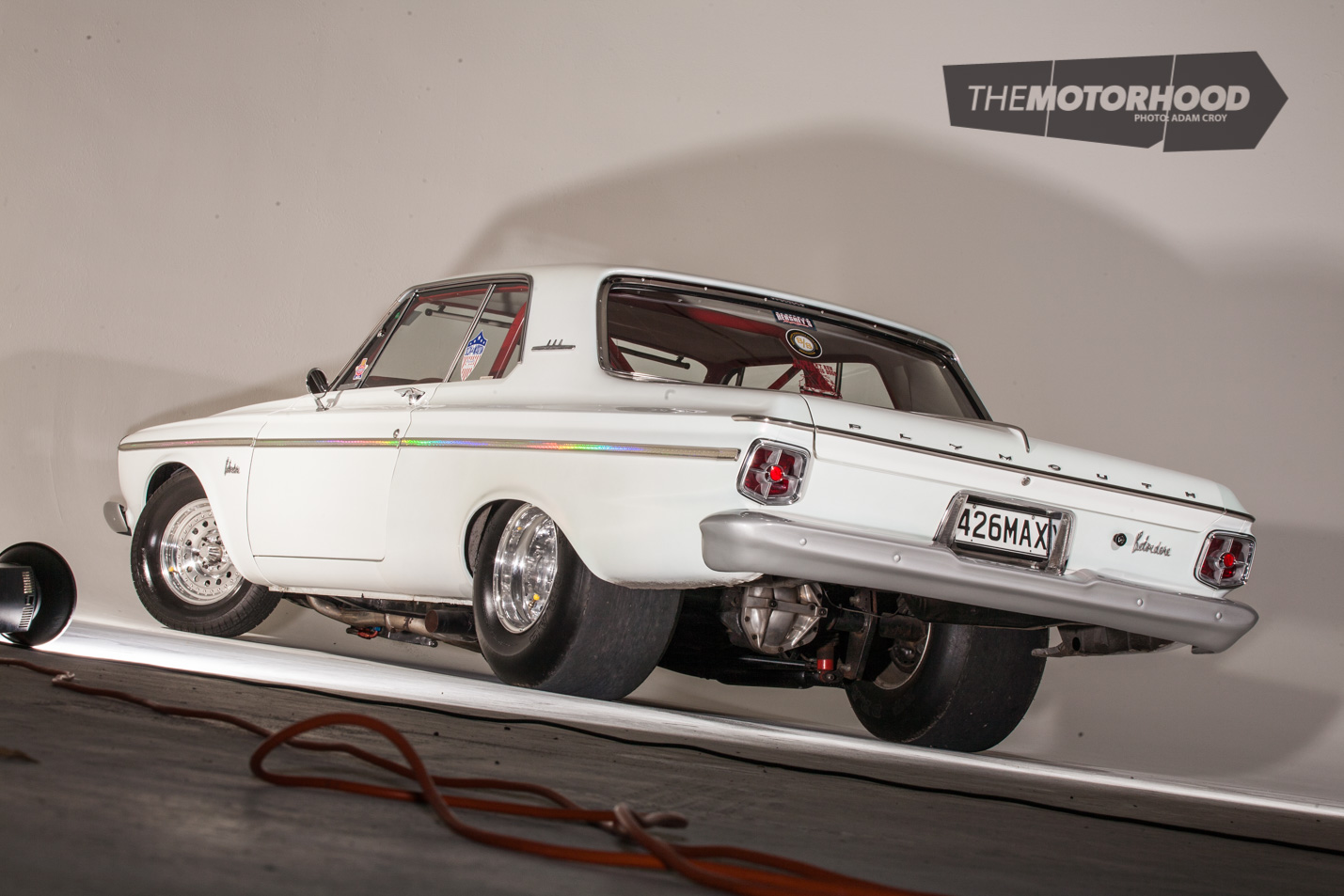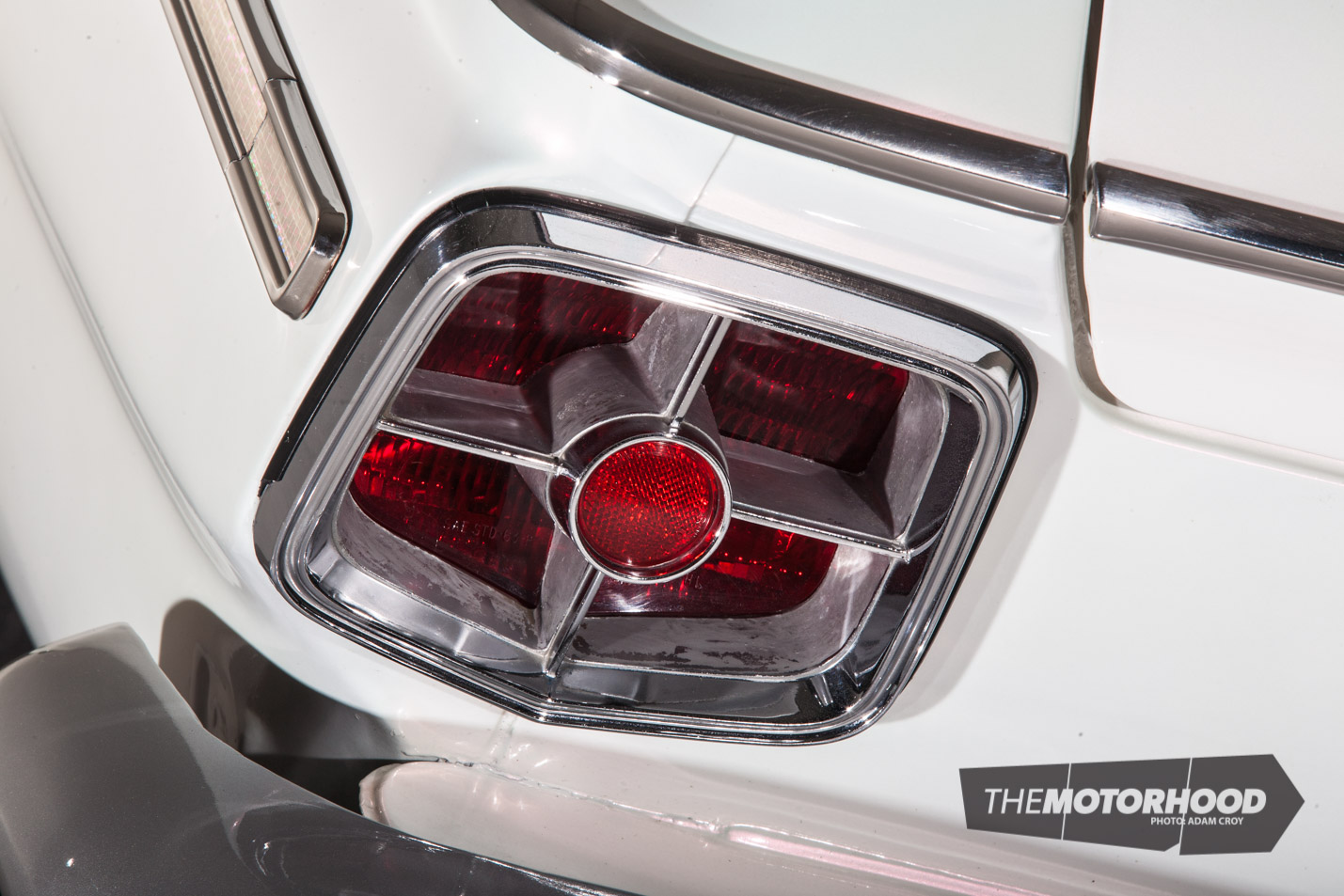data-animation-override>
“With 10-second passes and a show-winning finish, Dion Marson’s Plymouth Belvedere was one of New Zealand’s best kept secrets … until now — first published in NZV8 Issue No. 43”
Almost 12 months ago, NZV8 got wind of a new car in the greater Wellington area. Okay, being honest it was over in the Wairarapa. But we had it on good authority that it was well worth checking out.
It wasn’t long before the immaculate 1963 Plymouth Belvedere showed up at AV8 Performance to have some work done on the rather loud exhaust, in order for it to get through compliance. It was here we made a point of having a chat to Dion Marson, the vehicle’s owner, and he told us of his dream, his quest, and the shopping trip Stateside.

The trip itself was a bit of an assault on the senses. Dion left New Zealand during the warm months of summer and arrived in Pittsburgh to freezing cold temperatures and snow on the ground. Probably just as much of an assault was the car’s exhaust, with its four-inch straight-through mufflers hung off the back of the collectors. Yeah, it sounded cool and very much the business, but there was no way in hell it would go unnoticed during the VIN process.

Dion had owned a few mint cars already, but he wanted a tough, street-legal car that looked as good as it went, was unique to New Zealand, and symbolised America and nostalgic drag racing. With a favourable exchange rate, a pocket full of cash, and a burly cousin for assistance, Dion headed to the US to finalize a deal he had been working on.
He had found the car on the internet. It had run low 10-second passes, was immaculately finished, and could potentially be made street-legal back home — and it would quite possibly be the only one of its type in New Zealand.

The car’s builder was a chap by the name of Joe Badorf. His goal had been to use his years of drag racing and car building experience, and find a car in exceptional condition to develop into the finest Max Wedge clone in the USA. Joe certainly knew his business and built a stunner. Not only is this car clean; it’s white, big, loud, and somewhat intimidating. It also hauls arse, thanks to the 413 block bored and stroked out to 472ci. The big wedge motor is filled with Ross 13.2:1 pistons and Bill Miller aluminium rods, along with an offset grind crank with a
3.91-inch stroke. The oiling system consists of a Milodon swinging oil pick-up, and Milodon externally pumped oil lines that run through a hand-fabricated aluminium sump with built-in windage tray made by Hensley Racing of Knoxville, Tennessee.

That’s a pretty good for start for a tough street engine. Perched on top of the block is a pair of Indy SR alloy Max Wedge heads with 2.19-inch inlet and 1.81-inch exhaust valves. There’s also set of Comp Cams lifters, Harland Sharp rockers, moly pushrods and a Lunati roller cam to boot.

Yeah, the engine is pretty serious, and that’s before you get to the STR-15 cross ram manifold that’s topped with a pair of Barry Grant-fed Edelbrock 750CFM carbs. The ignition system consists of a dependable MSD 6AL with MSD leads and a Mopar race distributor with MSD coil. Cranking this high-compression little engine over is capably handled by a high torque starter and Optima 800CCA battery.

Feeling the power of the engine is a Coan-built 5200rpm stall converter inside a 727 Turbo Action trans assembled in Florida, with a full manual valve body and forward action shift pattern. The driveshaft was sourced from a Dodge Dart, as the engine and trans have been moved back two inches, through the use of a 1969 Road Runner K-frame, to ensure a better weight split. Out back the diff is a tough-as-nails Dana 60 with 4.56:1 gears and a Strange full spool. As the rear end was going to have some decent sized drag tyres fitted, Joe used a custom four-bar system and narrowed the rear frame rails to suit.

When viewing the car up on a hoist, you can certainly see that a lot of care and attention went into the build, and not in just the areas you can see. The American exhaust system has been replaced with a far more subtle one to get the car road legal, and is now stepped down from four inches to three, with a pair of Coby tube mufflers trying to keep the noise under control. With the car up on the hoist, it’s easy to see the suspension package, which is made up of QA1 Stocker Star shocks in the front and Koni coilovers in the rear. All the bushes, ball joints, and other serviceable suspension components were replaced with Performance Suspension components before Joe sold the car to Dion.

As you’d expect of a car running 10-second passes, the brakes also had a major upgrade. The front now consists of Aerospace four-piston calipers and Aerospace rotors, hubs, and brake lines. The rear uses 1969 B-body drums measuring 11 inches tall by three inches wide.

The Centreline Racing Pro Stock wheels measuring 15×4 inches at the front and 15×14 inches at the rear do a pretty good job of hiding the nice new brakes and holding the tyres in place. The front tyres are 215/70R15, while the rears are swapped between a set of Mickey Thompson Sportsman Pros that measure 31×16.5×15 inches for the street, and a pair of Mickey Thompson ET streets that measure 31×10.5×15 inches for the strip.

The all-steel body is pretty well stock except for the fibreglass bumpers and hood scoop, which is a Max Wedge replica with a five-inch-high opening handcrafted by W&S Racing in Ohio. Joe did all the panel work himself, before the car was painted in the white with red pearl clearcoat it now sports.

The interior is as serious as the rest of the car, while still retaining all the creature comforts a street machine requires. Well, except for a stereo, but Dion reckons the engine and exhaust have the sounds job well covered. There’s a well-constructed yet unobtrusive eight-point roll cage that protects any passengers seated in Jaz fibreglass race buckets with RJS racing harnesses. To go along with the plush — or is that pimped? — red velour interior, there’s a mahogany Signature Series Grant steering wheel. A full complement of Auto Meter gauges mounted in a carbon fibre panel keep an eye on the vitals, and discreetly hidden in the dash is an Auto Meter shift light.

Once the dealing was done the wheeling began. Dion and his cousin trailered the car 4830km at an average 120kph, with crazy American drivers and B-trains whizzing past — a nerve-racking experience for the two Kiwi lads. They got a lot of toots from people looking at the car on the way past, and Dion wonders if the toots and smiles would have been so friendly had the admirers known the car was about to be exported.

Dion’s plans for the Belvedere are to drive it, show it, and most of all to see if it can run the same ETs here as it did back in USA. Last season at Masterton he managed a best of 10.52 at 129mph, getting close to that 10.22-second goal, and not bad going for minimal seat time.
Dion has a few other long-term plans, and they may or may not include the Belvedere, so he’s open to the thought of it being sold. If you’re interested in owning one of the toughest street cars in the country, give us a call and we can put you in touch. With another very tough Pro Street car just landed, it looks as if Dion is going to be a very busy boy.
1963 Plymouth Belvedere
- Engine: 472ci big block Mopar, 413 Wedge block, 440 forged steel crankshaft, Ross Racing pistons, Miller alloy rods, Lunati cam, Indy SR alloy heads, Comp Cams lifters, Harland Sharp roller rockers, Cloyes roller timing chain, STR-15 cross-ram intake manifold, twin Edelbrock 750cfm carbs, MSD 6AL ignition, MSD leads, Be Cool alloy radiator, electric fan, CSI electric water pump
- Driveline: Chrysler TorqueFlite 727 transmission, full manual valve body, forward-action shift pattern, 5200rpm stall converter, Dana 60 diff, 4.56:1 gears, Strange full spool, Strange 35-spline axles
- Suspension: QA1 front coilovers, Koni rear coilovers, custom four-bar rear
- Brakes: Aerospace calipers and rotors, ’69 Plymouth B-body 11×3-inch drums
- Wheels/Tyres: 15×4-inch and 15×14-inch Centreline Pro Stock rims, Mickey Thompson Sportsman Pro 31×16.5×15 rear tyres
- Exterior: Custom paint, Max Wedge replica bonnet scoop
- Interior: Jaz race seats, RJS harnesses, Grant steering wheel, Cheetah SCS shifter, Auto Meter gauges, Auto Meter shift light, Panasonic head unit
- Chassis: Narrowed rear frame rails, ’69 Road Runner K-frame
- Performance: Dyno 620hp (462kW); 10.22 at 134mph (USA), 10.52 at 129mph (NZ)
This article was originally published in NZV8 Issue No. 43. You can pick up a print copy of the magazine below:

























